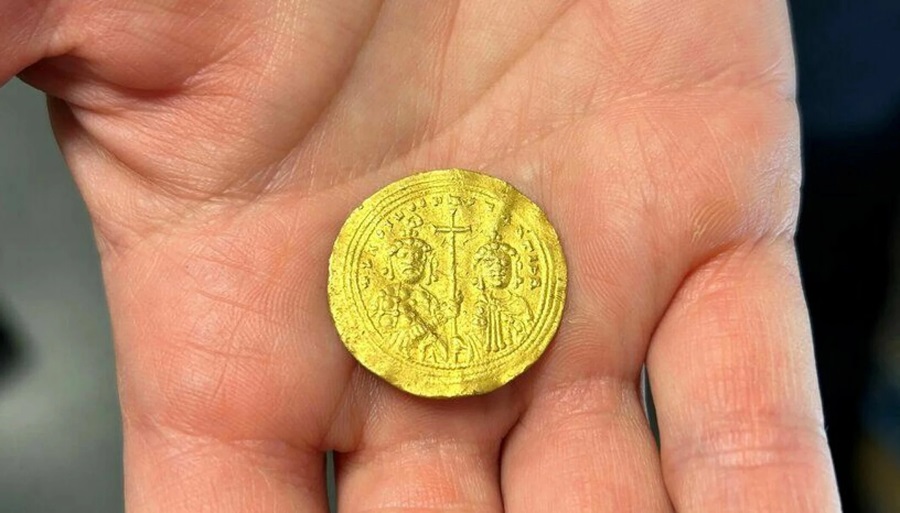
A Byzantium-era gold coin that was recently discovered in the mountains of southern Norway has historians and archaeologists perplexed over how it ended up there.
The coin is a Byzantine histamenon nomisma. These were introduced in Byzantium around 960 AD in what was then the eastern part of the Roman Empire.
One side of the coin is stamped with an image of Christ holding the Bible. On the other side, the two emperors Basil II and Constantine VIII are most likely depicted. The two brothers jointly ruled in Byzantium for almost fifty years from 976 to 1025.
Presumably, the coin was minted early in the eleventh century. The exact date is difficult to determine, but the dotted border suggests it was late in Basil’s and Constantine’s reign, Norwegian archaeologist May-Tove Smiseth told Science Norway.
The coin also bears two inscriptions. In Latin, it says Jesus Christ, King of those who rule, and in Greek, it reads Basil and Constantine, emperors of the Byzantine Empire.

How did the Byzantine gold coin end up in Norway?
In some way or other, the coin found its way to Valdres in Norway. Science Norway says that perhaps it was originally part of the treasures that Harald Hardrada amassed after serving in the Varangian Guard for the Byzantine emperor in 1034. The Varangian Guard consisted of Scandinavian mercenaries, who served as bodyguards and were known as being fearless and strong.
Hardrada was King of Norway from 1046 to 1066. Additionally, he unsuccessfully claimed both the Danish throne until 1064 and the English throne in 1066. In a press release, Innlandet County writes that it was customary at that time for the guards to loot the palace when an emperor died, and during Harald’s time in Byzantium, three emperors had died.
“It’s not unrealistic to suggest that this is where the coin originates from,” Smiseth told Science Norway. She points to a study on Byzantine coins in the Nordic region, which states that three Byzantine gold coins have been found in Sweden, none in Denmark, but fifteen in Norway. Most of these were from various treasure finds made in the nineteenth century. This includes the recent find in Valdres.
“It’s reasonable to believe that this coin could be from the treasures that Harald Hardrada brought with him,” Smiseth says. “He received a lot of gold in payment from the three emperors in Byzantium who ruled while he was there.”
“Harald acquired a lot of power by using the gold he returned with to build alliances,” Smiseth added.
Over the mountains in Valdres, trade routes connected the east and west. Perhaps a merchant traveler had the unfortunate luck to lose the splendid gold coin on such a trading trip. Science Norway notes that we might learn more about this next year because the discovery was made so late in autumn this year, and the ground had already frozen. The discovery site will, therefore, be examined more closely in the spring.
See all the latest news from Greece and the world at Greekreporter.com. Contact our newsroom to report an update or send your story, photos and videos. Follow GR on Google News and subscribe here to our daily email!



